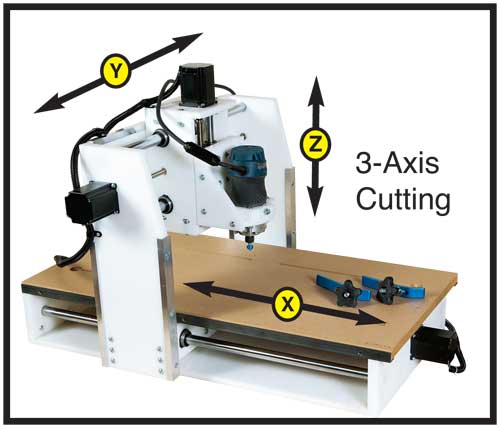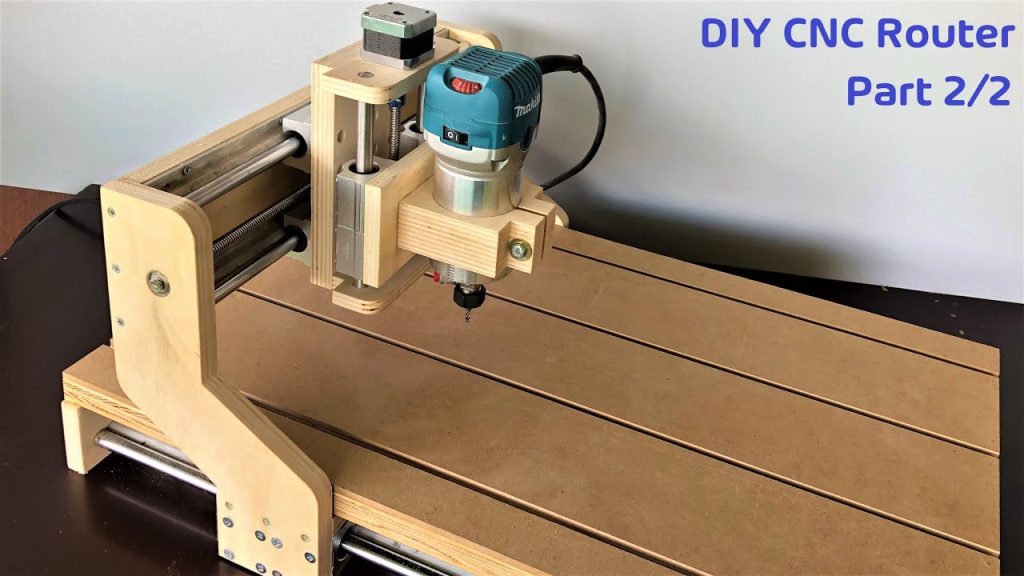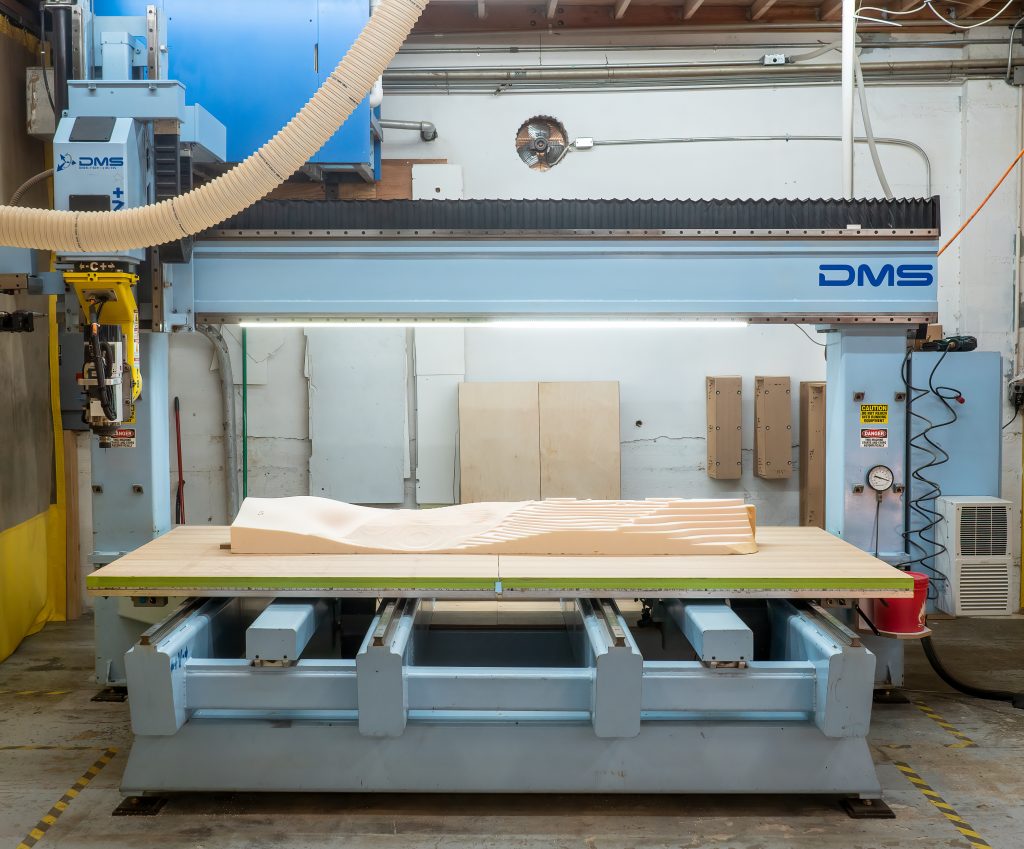Table of Contents
- Frequently Asked Questions
- Can the Z axis on a CNC router be extended?
- What are the benefits of extending the Z axis on a CNC router?
- What are some factors to consider when extending the Z axis on a CNC router?
- Can a CNC router with an extended Z axis still work with smaller projects?
- What are some tips for extending the Z axis on a CNC router?
Are you a CNC router enthusiast who is looking to expand the possibilities of your machine? One question that may have crossed your mind is whether it’s possible to extend the Z axis on your CNC router. The Z axis is an essential component of the CNC router that controls the up-and-down movement of the cutting tool, so extending it could open up a whole new world of possibilities in terms of the thickness of materials you can work with and the complexity of designs you can create.
In this article, we will explore the possibility of extending the Z axis on a CNC router, the benefits and drawbacks of doing so, and the steps you need to take to make it happen. Whether you’re a hobbyist or a professional woodworker, this article will provide you with the information you need to decide whether extending the Z axis is right for you. So, let’s dive in!
Yes, the Z axis on a CNC router can be extended by adjusting the height of the spindle or adding an extension to the machine. However, it’s important to note that extending the Z axis may affect the accuracy and stability of the machine, so it’s recommended to consult with a professional before making any modifications.
Can the Z Axis on a CNC Router Be Extended?
When it comes to CNC routers, the Z axis is an essential component that determines the depth of the cuts that can be made. However, what happens when the Z axis on your CNC router is not enough to accommodate the material you want to cut? The good news is that in most cases, you can extend the Z axis on your CNC router to increase the depth of the cuts.
What is the Z axis on a CNC router?
The Z axis on a CNC router is one of the three axes that define the cutting volume of the machine. The Z axis is responsible for the vertical movement of the spindle, and it determines how deep the cuts can be. A standard CNC router usually has a Z axis travel of around six inches, which is enough for most applications. However, if you want to cut thicker materials or carve deeper into the material, you may need to extend the Z axis.
To extend the Z axis on a CNC router, you will need to install a longer lead screw or ball screw. The lead screw is the component that moves the spindle up and down, and it is usually located at the back of the machine. By replacing the standard lead screw with a longer one, you can increase the travel distance of the Z axis.
Another option is to install a ball screw, which provides smoother and more precise movement compared to a lead screw. A ball screw consists of a threaded rod and a series of ball bearings that move along the thread. The ball bearings reduce friction and allow for higher speeds and greater accuracy.
Benefits of extending the Z axis on a CNC router
Extending the Z axis on a CNC router has several benefits, including:
- Ability to cut thicker materials: With a longer Z axis, you can cut thicker materials that were previously impossible to cut.
- Increased carving depth: If you are a woodworker or a sign maker, you can carve deeper designs into the material, allowing for more intricate and detailed work.
- Flexibility: With a longer Z axis, you have more flexibility in terms of the types of projects you can undertake. You can take on more challenging projects and push the limits of what is possible with your CNC router.
Extending the Z axis vs. upgrading to a larger machine
If you find yourself frequently needing to cut thicker materials, you may be wondering whether it is better to extend the Z axis on your current machine or upgrade to a larger machine. While both options have their pros and cons, extending the Z axis is usually the more cost-effective solution.
Upgrading to a larger machine can be expensive, and you may also need to purchase new tooling and software. On the other hand, extending the Z axis is a relatively simple and inexpensive process that can be done by most DIYers. Additionally, extending the Z axis allows you to keep using your existing machine, which you are already familiar with.
Conclusion
Extending the Z axis on a CNC router is a great way to increase the cutting depth of your machine and take on more challenging projects. By installing a longer lead screw or ball screw, you can cut thicker materials and carve deeper designs into the material. Extending the Z axis is also a more cost-effective solution compared to upgrading to a larger machine.
Frequently Asked Questions
Here are some common questions about extending the Z axis on a CNC router.
Can the Z axis on a CNC router be extended?
Yes, the Z axis on a CNC router can be extended to increase the maximum height of the machine. This is typically done by adding longer linear rails, lead screws, and motor mounts to the machine. However, extending the Z axis can also affect the rigidity and stability of the machine, which can lead to decreased accuracy and precision.
Before extending the Z axis, it is important to carefully consider the specific needs of your project and the capabilities of your machine. You may also need to upgrade other components of the machine, such as the spindle or controller, to ensure that it can handle the increased height and weight of the extended Z axis.
What are the benefits of extending the Z axis on a CNC router?
Extending the Z axis on a CNC router can allow you to work on larger projects and materials that require more height, such as 3D carvings, molds, and sculptures. It can also make it easier to access the workpiece and change out tools without having to constantly reposition the machine or workpiece.
However, it is important to keep in mind that extending the Z axis can also come with some drawbacks, such as decreased rigidity and accuracy. It may also require additional maintenance and calibration to ensure that the machine is functioning properly.
What are some factors to consider when extending the Z axis on a CNC router?
When extending the Z axis on a CNC router, there are several factors to consider, such as the weight and size of the workpiece, the type of material being used, and the capabilities of the machine’s components. You may also need to consider the additional cost and time required to purchase and install the necessary components.
It is also important to carefully plan and test the extension before making any permanent modifications to the machine. This may involve creating a prototype or testing the extension with mock materials to ensure that it can handle the increased height and weight without sacrificing accuracy and precision.
Can a CNC router with an extended Z axis still work with smaller projects?
Yes, a CNC router with an extended Z axis can still work with smaller projects, as long as the machine is properly calibrated and the workpiece is securely positioned. However, it is important to keep in mind that the extended Z axis may make it harder to access the workpiece and change out tools, which can increase the time and effort required for smaller projects.
If you frequently work on both large and small projects, you may want to consider purchasing a machine with a removable or adjustable Z axis, which can provide more flexibility and ease of use for different types of projects.
What are some tips for extending the Z axis on a CNC router?
Before extending the Z axis on a CNC router, it is important to thoroughly research and plan the modifications to ensure that they are safe and effective. This may involve consulting with a professional or experienced CNC technician, as well as carefully selecting and testing the components you will be using.
You should also be prepared to invest additional time and money into the modification process, as well as ongoing maintenance and calibration to ensure that the machine is functioning properly. Finally, it is important to prioritize safety and follow all recommended precautions when making modifications to your CNC router.
In conclusion, extending the Z axis on a CNC router can be a game-changer for those looking to take on more complex projects. With the ability to work on thicker materials and create deeper cuts, the possibilities for creativity and precision are endless.
However, before making any modifications to your CNC router, it is important to consider the structural integrity of the machine and ensure that it can handle the added weight and stress. Consulting with a professional or the manufacturer may be necessary to ensure a safe and successful modification.
Overall, extending the Z axis can be a valuable investment for those looking to expand their capabilities and take on new challenges in the world of CNC routing. With careful planning and consideration, the benefits of this modification can be realized for years to come.
Request a quote today!
[contact-form-7 id="1578" title="Contact form"]
Please compress the file into a ZIP or RAR file before uploading. Alternatively, send through your RFQ by email.
enquires@unitymanufacture.com





